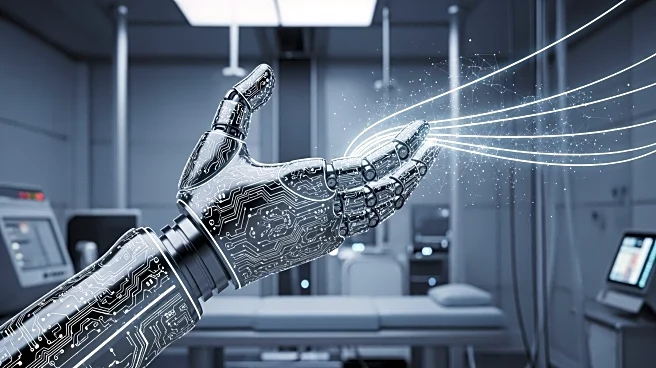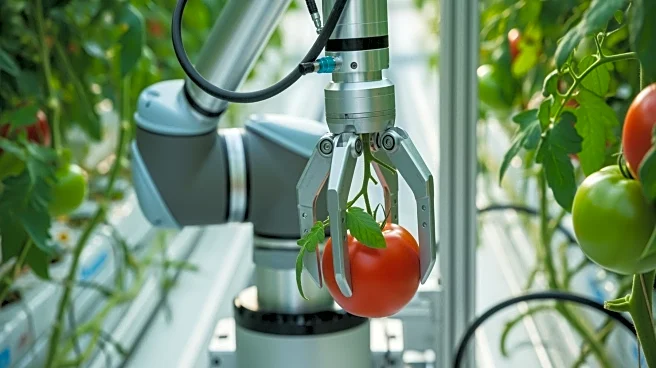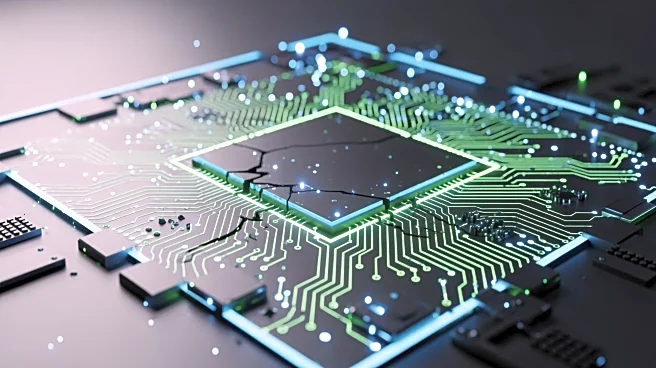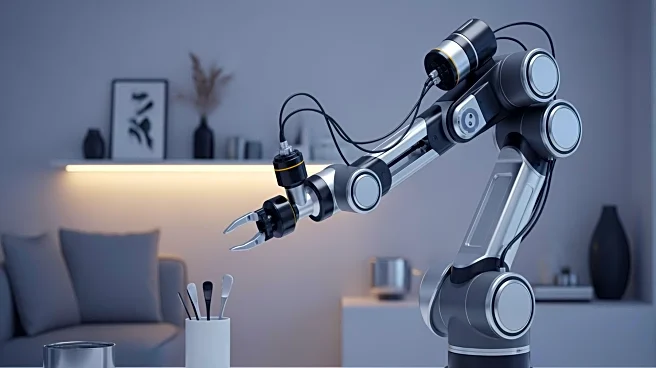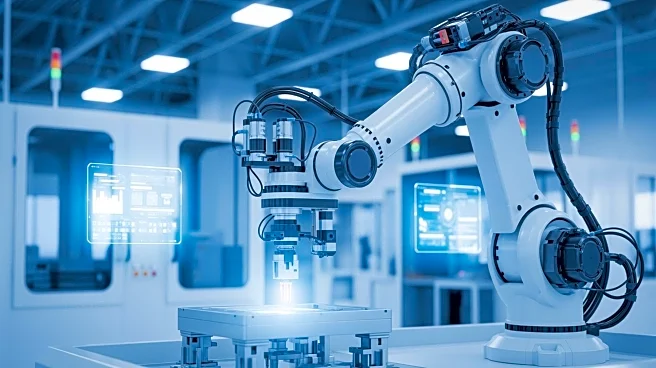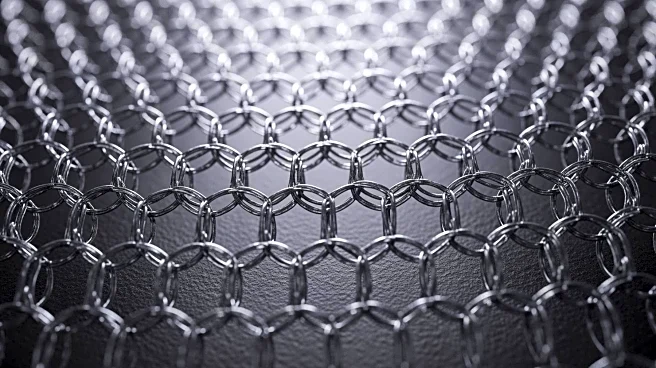What's Happening?
RIKEN chemists have developed a new self-healing polymer integrated with gold nanoparticles, designed for use in flexible conductors. This innovation addresses the brittleness and lack of flexibility in traditional conductors, making them suitable for wearable
technology and robotic systems. The polymer's self-healing properties allow it to repair itself after damage, enhancing durability and reliability. The research, published in the Journal of the American Chemical Society, highlights the potential for these conductors in advanced technologies.
Why It's Important?
The development of self-healing conductors could significantly impact the fields of robotics and wearable electronics by extending the lifespan and reliability of devices. This technology offers a solution to the mechanical damage that often compromises the performance of flexible conductors. By improving durability, these conductors could reduce maintenance costs and increase the efficiency of electronic devices, benefiting industries that rely on advanced robotics and wearable tech.
What's Next?
Future research may focus on optimizing the polymerization process and exploring other potential applications for these self-healing conductors. The integration of this technology into commercial products could lead to collaborations with tech companies and manufacturers. As the demand for flexible and durable electronics grows, this innovation could drive further advancements in material science and engineering.
Beyond the Headlines
The introduction of self-healing materials raises questions about the long-term sustainability and environmental impact of these technologies. While they offer benefits in terms of durability and efficiency, the production and disposal of such materials must be managed responsibly. Additionally, the potential for these materials to revolutionize industries could lead to shifts in labor markets and manufacturing practices.
